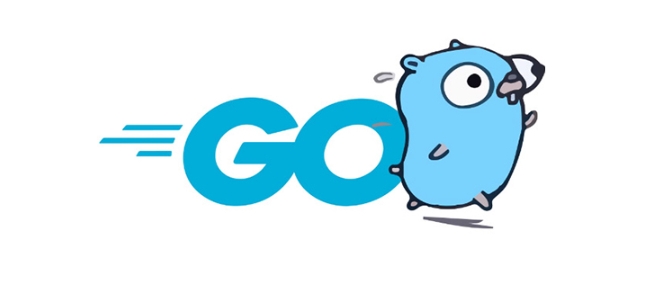In Go language, struct tags are meta information attached to the structure field, which is used to control serialization, deserialization behavior or provide library configuration. 1. struct tags are written in the backticks in the format of key:"value", such as json:"name", which determines the serialization method of the field; 2. Multiple tags can coexist, and each library parses the required parts, such as json and gorm together; 3. mapstruct is used to configure mapping, and supports omitting tags and nested structures when the field names are consistent; 4. Pay attention to avoid spelling errors, fields need to be exported, and tags cannot be abused to affect readability. Mastering its usage can help improve development efficiency and code quality.

In Go, structs are one of the basic ways we organize data. struct tags are some meta information attached to the structure field, which is usually used to control serialization, deserialization behavior, or to provide additional configuration information for other libraries.

These tags seem simple, but if you don’t understand them clearly in actual development, it is easy to get into pitfalls. Let’s take a look at some key points and usage tips of struct tags.
What is struct tags?
struct tags is a string tag written after the structure field, wrapped in backticks (`). For example:

type User struct {
Name string `json:"name"`
Age int `json:"age,omitempty"`
Email string `json:"-"`
} json:"name" , json:"age,omitempty" and json:"-" in the above example are all struct tags. Their function depends on the library you use, such as standard library encoding/json or third-party libraries such as yaml, gorm, mapstructure, etc.
The format of each tag is usually: key:"value" , where value can contain multiple options, separated by commas.

Common uses and recommendations
1. Control JSON serialization/deserialization behavior
This is the most common use scenario. Through json tags, you can specify the name of the field in JSON, whether to ignore null values, etc.
- Field name mapping:
json:"username"means that the field is called username in JSON. - Ignore null values:
omitemptymeans that if the field is empty (such as empty string, 0, nil, etc.), it will not be output to JSON. - Force ignorance:
json:"-"means that this field should not be output at any time.
Small suggestions:
- If you are not sure whether a field is empty but do not want to be exposed to external interfaces, you can add
omitempty. - If you want to completely hide the fields, use
-, but be careful that this won't really protect the data, it's just not serializing.
2. Use multiple tags at the same time
A field can have multiple tags, which is suitable for using multiple libraries at the same time. For example:
type Product struct {
ID int `json:"id" gorm:"primaryKey"`
Name string `json:"name" validate:"required"`
}Here we use three tags: json, gorm and validate. Different libraries will read the parts they need and will not affect each other.
Notice:
- Different libraries may have slightly different ways of parsing tags, and some support more syntax (such as mapstructure support
,squash). - If you are using certain frameworks (such as Gin, Echo), remember to check the document to confirm whether the tag is effective correctly.
3. Use mapstruct for configuration mapping
When loading configurations from YAML or TOML files, they are often used with viper and mapstructure. At this time, the key of the struct tag becomes mapstructure .
For example:
type Config struct {
Port int `maplanture:"port"`
Hostname string `maplanture:"hostname"`
}This allows automatic mapping from the configuration file to the structure field.
Practical Tips:
- If the field name and the configuration item name are the same, the tag can be omitted.
- Use
mapstructure:",squash"to "flat" the nested structure, which is convenient for combining and configuration.
Frequently Asked Questions and Precautions
- A misspelling of tags will cause it to not work : for example, if you write it as
jons:"name", the JSON package will ignore it directly. - Fields must be exported (capsular) before they can be processed : otherwise many libraries will skip this field.
- Don't abuse tags : Although you can write many tags on a field, if there are too many, it will affect readability.
Basically that's it. struct tags, although it seems to be a small detail, is very useful in actual projects. As long as you master the basic format and usage of each library, you can avoid a lot of trouble.
The above is the detailed content of Go struct tags. For more information, please follow other related articles on the PHP Chinese website!

Hot AI Tools

Undress AI Tool
Undress images for free

Undresser.AI Undress
AI-powered app for creating realistic nude photos

AI Clothes Remover
Online AI tool for removing clothes from photos.

Clothoff.io
AI clothes remover

Video Face Swap
Swap faces in any video effortlessly with our completely free AI face swap tool!

Hot Article

Hot Tools

Notepad++7.3.1
Easy-to-use and free code editor

SublimeText3 Chinese version
Chinese version, very easy to use

Zend Studio 13.0.1
Powerful PHP integrated development environment

Dreamweaver CS6
Visual web development tools

SublimeText3 Mac version
God-level code editing software (SublimeText3)

Hot Topics
 Your First PHP Script: A Practical Introduction
Jul 16, 2025 am 03:42 AM
Your First PHP Script: A Practical Introduction
Jul 16, 2025 am 03:42 AM
How to start writing your first PHP script? First, set up the local development environment, install XAMPP/MAMP/LAMP, and use a text editor to understand the server's running principle. Secondly, create a file called hello.php, enter the basic code and run the test. Third, learn to use PHP and HTML to achieve dynamic content output. Finally, pay attention to common errors such as missing semicolons, citation issues, and file extension errors, and enable error reports for debugging.
 What is PHP and What is it Used For?
Jul 16, 2025 am 03:45 AM
What is PHP and What is it Used For?
Jul 16, 2025 am 03:45 AM
PHPisaserver-sidescriptinglanguageusedforwebdevelopment,especiallyfordynamicwebsitesandCMSplatformslikeWordPress.Itrunsontheserver,processesdata,interactswithdatabases,andsendsHTMLtobrowsers.Commonusesincludeuserauthentication,e-commerceplatforms,for
 PHP 8 Installation Guide
Jul 16, 2025 am 03:41 AM
PHP 8 Installation Guide
Jul 16, 2025 am 03:41 AM
The steps to install PHP8 on Ubuntu are: 1. Update the software package list; 2. Install PHP8 and basic components; 3. Check the version to confirm that the installation is successful; 4. Install additional modules as needed. Windows users can download and decompress the ZIP package, then modify the configuration file, enable extensions, and add the path to environment variables. macOS users recommend using Homebrew to install, and perform steps such as adding tap, installing PHP8, setting the default version and verifying the version. Although the installation methods are different under different systems, the process is clear, so you can choose the right method according to the purpose.
 How Do You Handle File Operations (Reading/Writing) in PHP?
Jul 16, 2025 am 03:48 AM
How Do You Handle File Operations (Reading/Writing) in PHP?
Jul 16, 2025 am 03:48 AM
TohandlefileoperationsinPHP,useappropriatefunctionsandmodes.1.Toreadafile,usefile_get_contents()forsmallfilesorfgets()inaloopforline-by-lineprocessing.2.Towritetoafile,usefile_put_contents()forsimplewritesorappendingwiththeFILE_APPENDflag,orfwrite()w
 Advanced PHP Multiline Comment Techniques
Jul 17, 2025 am 04:14 AM
Advanced PHP Multiline Comment Techniques
Jul 17, 2025 am 04:14 AM
UsemultilinecommentsinPHPforfunction/classdocumentation,codedebugging,andfileheaderswhileavoidingcommonpitfalls.First,documentfunctionsandclasseswith/*...*/toexplainpurpose,parameters,andreturnvalues,aidingreadabilityandenablingIDEintegration.Second,
 PHP Variable Scope Explained
Jul 17, 2025 am 04:16 AM
PHP Variable Scope Explained
Jul 17, 2025 am 04:16 AM
Common problems and solutions for PHP variable scope include: 1. The global variable cannot be accessed within the function, and it needs to be passed in using the global keyword or parameter; 2. The static variable is declared with static, and it is only initialized once and the value is maintained between multiple calls; 3. Hyperglobal variables such as $_GET and $_POST can be used directly in any scope, but you need to pay attention to safe filtering; 4. Anonymous functions need to introduce parent scope variables through the use keyword, and when modifying external variables, you need to pass a reference. Mastering these rules can help avoid errors and improve code stability.
 PHP Operators for Beginners
Jul 17, 2025 am 04:17 AM
PHP Operators for Beginners
Jul 17, 2025 am 04:17 AM
Mastering the commonly used operators of PHP can deal with most development scenarios, mainly including: 1. Arithmetic operators ( , -, , /, %) are used for mathematical calculations and support dynamic variable operations, but pay attention to the problems that may be caused by automatic type conversion; 2. Comparison operators (==, ===, !=, >
 Understanding Java Synchronizers: Semaphores, CountDownLatch
Jul 16, 2025 am 02:40 AM
Understanding Java Synchronizers: Semaphores, CountDownLatch
Jul 16, 2025 am 02:40 AM
Semaphore is used to control the number of concurrent accesses, suitable for resource pool management and flow-limiting scenarios, and control permissions through acquire and release; CountDownLatch is used to wait for multiple thread operations to complete, suitable for the main thread to coordinate child thread tasks. 1. Semaphore initializes the specified number of licenses, supports fair and non-fair modes, and when used, the release should be placed in the finally block to avoid deadlock; 2. CountDownLatch initializes the count, call countDown to reduce the count, await blocks until the count returns to zero, and cannot be reset; 3. Select according to the requirements: use Semaphore to limit concurrency, wait for all completions to use CountDown






